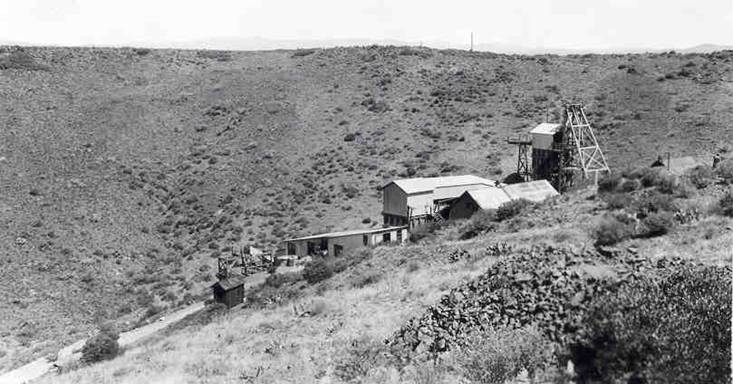Richinbar Mine

Richinbar Mine - Photo from 1940 - Courtesy of Arizona Geologic Survey files
Friday, June 24, 2011
The Ballad of the Hard Rock Miner - new arrangement
This is a new arrangement of The Ballad of the Hard Rock Miner. I hope that you enjoy it. I am pleased to include several period photographs courtesy of the Mohave Museum of History and Art.
This song is inspired by "Deep Enough-A Working Stiff in the Western Mine Camps" - University of Oklahoma Press - by Frank Crampton. Many thanks to Ed Romanski of the Desert Caballeros Western Museum in Wickenburg, Arizona, for recommending this book to me. Ed is a transplanted New Yorker, like me, with his boots firmly rooted in Arizona's history. The heritage and history of Arizona needs to be discovered on foot, horseback, and in a 4-wheel drive truck. Many of the most interesting places are not marked on most maps. There is an abundant supply of accurate historical information that is readily available to the amateur historian: historical societies, foundations, archives, and libraries have been posting documents, maps, and photos on websites that are easily accessible. In addition, many books are available (both re-issues of out-of-print books and newly written) about Arizona mining history.
The historic maps of Arizona display dense clusters of mines and mining camps that were centers of intense activity in the period 1880-1930. Names like Chloride, Constellation, Stanton, Gillette, Tiptop, Humbug, and Bradshaw City were the centers intense prospecting, mining, processing, and community life. Many of these historic sites do not make the cut of "ghost town" tourist books. Many of them are located within 5 miles of highways and interstates. Others are easily accessible in high-clearance vehicles via forest service roads and jeep trails.
"Deep Enough" is essential reading for anyone wanting to know about the day-to-day life in the western mining camps in the early years of the 20th century. The song describes the life of a "hard-rock stiff" who works in a mine for ten days, and then moves on to the next mine. Miners of the day were very mobile, roaming the country from Butte, Montana to Bisbee, Arizona. The work rules of the day required a minimum of ten days work in order to draw a paycheck.
The song expresses the realities of a dangerous occupation, the swaggering pride of a highly skilled craftsman, and the pleasures that were available in the mining camps and towns along the way.
The Rand McNally Official 1925 Auto Trails Map is courtesy of the University of Kansas Libraries. The song is copyrighted by Robert T. Gibney 2011.
Subscribe to:
Post Comments (Atom)
Get hold of me at: geotekllc@gmail.com. I may have a market for your songs.
ReplyDeleteHello. I'm looking for a song for my next video. I'm hoping that you'd let me use this ballad of the hard rock miner. The video is a compilation of still from the Carson City Nevada Single Jack World Championship on Nevada Day. Here's the first one from 2010. http://www.youtube.com/watch?v=UWkuPexLero
ReplyDeleteDr Shok - I replied to your email. Your email address said "no reply". Please reply to my email or send another email to rtgibney@gmail.com using your primary email address.
ReplyDeleteI posted the Man -V- Rock video of the Single Jack World Championship, Nevada Day 2011 at:
ReplyDeletehttp://www.youtube.com/watch?v=N7zh1TF1UUs
I think your song works pretty well! Thanks. God bless!
photography@uisreno.com
http://www.uisreo.com/~photography
What would improve this song is the background sound of somebody striking a singlejack drill with a four pound hammer. You can use a star drill instead to duplicate the sound of a single jack iron.
ReplyDelete